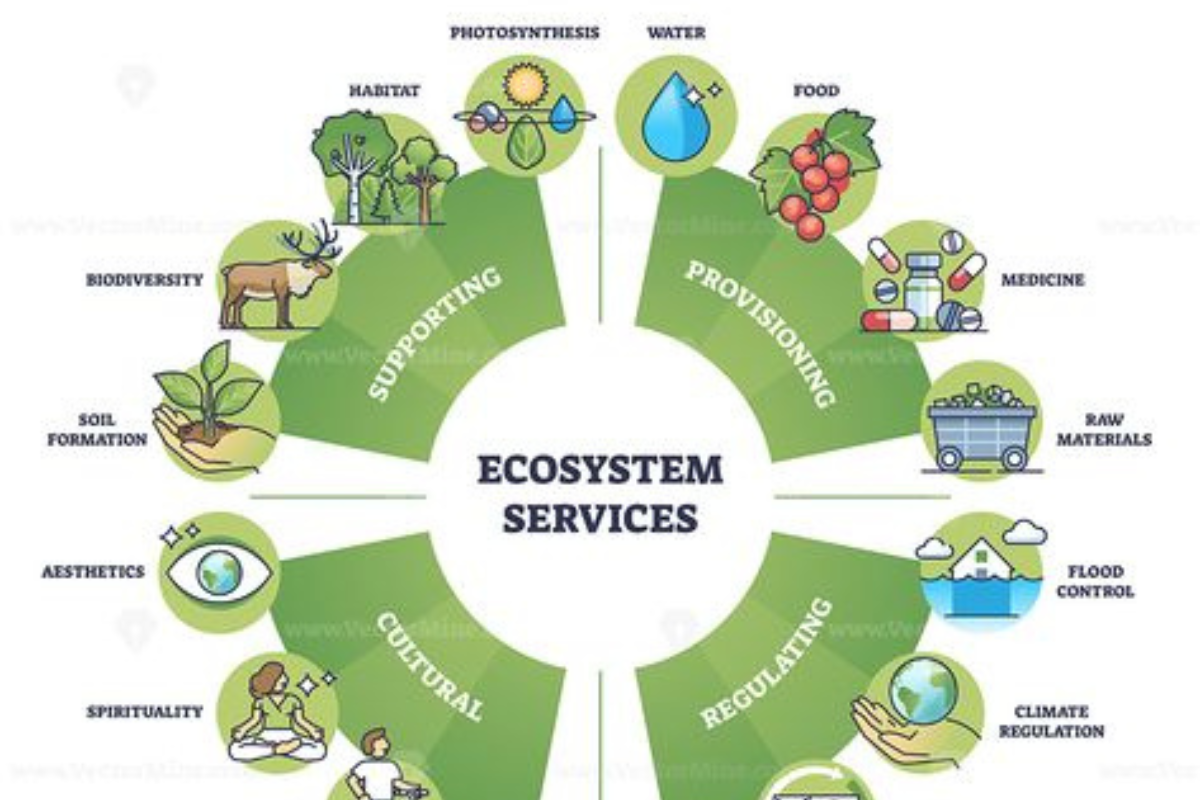Designing a self-sustaining garden ecosystem not only benefits the environment but also reduces the effort required to maintain your garden. By working with nature instead of against it, you can create a thriving habitat that supports plants, wildlife, and soil health while minimizing resource consumption. Here’s how to create a self-sustaining ecosystem in your garden.
Understanding Garden Ecosystems
A self-sustaining garden ecosystem mimics the natural processes found in wild environments. It integrates plants, animals, microorganisms, and natural cycles such as water and nutrient recycling. The goal is to achieve a balanced system where all elements work together to support one another.
Key Principles of a Self-Sustaining Garden
- Biodiversity: Include a wide variety of plants and encourage beneficial insects and wildlife.
- Healthy Soil: Build and maintain nutrient-rich soil to support plant growth and microbial activity.
- Water Conservation: Use methods to capture and retain water efficiently.
- Closed-Loop Systems: Recycle organic matter and nutrients within the garden.
- Minimal Intervention: Allow nature to regulate pests and diseases through natural predators and plant diversity.
Steps to Create a Self-Sustaining Garden
1. Plan Your Garden Layout
- Assess Your Space: Evaluate sunlight, soil type, and available water sources to determine what plants will thrive.
- Create Zones: Designate areas for vegetables, perennials, flowers, and natural habitats.
- Integrate Layers: Mimic forest ecosystems by incorporating ground covers, shrubs, trees, and vines for vertical diversity.
2. Build Healthy Soil
- Composting: Recycle kitchen scraps, garden waste, and organic material to create nutrient-rich compost.
- Mulching: Apply organic mulch to retain moisture, regulate soil temperature, and suppress weeds.
- Crop Rotation: Rotate crops annually to prevent nutrient depletion and reduce the risk of pests and diseases.
- Soil Testing: Test your soil to understand its nutrient content and amend it with natural additives like compost, manure, or bone meal as needed.
3. Choose the Right Plants
- Native Species: Opt for plants native to your region, as they are well-adapted to local conditions and require less maintenance.
- Companion Planting: Pair plants that benefit each other, such as marigolds with tomatoes to deter pests.
- Perennials: Incorporate perennials like lavender, rhubarb, or berry bushes for long-term stability.
- Pollinator-Friendly Plants: Include flowers like sunflowers, coneflowers, and daisies to attract bees, butterflies, and other pollinators.
4. Foster Biodiversity
- Attract Beneficial Insects: Provide habitats for insects like ladybugs, bees, and spiders that control pests naturally.
- Install Birdhouses and Feeders: Birds help control insect populations and add life to your garden.
- Create Water Features: A small pond or birdbath can support amphibians, insects, and birds.
- Leave Wild Areas: Allow parts of your garden to grow naturally to provide shelter for wildlife.
5. Conserve Water
- Rainwater Harvesting: Install rain barrels to collect water for irrigation.
- Drip Irrigation: Use efficient watering systems that deliver water directly to plant roots.
- Drought-Resistant Plants: Incorporate plants that require minimal watering, especially in arid regions.
- Mulch and Ground Covers: Reduce water evaporation by covering soil with organic materials or living ground covers.
6. Recycle and Reuse
- Compost Organic Waste: Turn garden clippings and food scraps into compost to enrich the soil.
- Repurpose Materials: Use old containers, wood, or stones for garden beds and pathways.
- Seed Saving: Harvest seeds from your plants for future planting to reduce dependency on store-bought seeds.
7. Minimize Chemicals and External Inputs
- Natural Pest Control: Use neem oil, soap sprays, or companion planting instead of chemical pesticides.
- Organic Fertilizers: Replace synthetic fertilizers with compost, seaweed extract, or animal manure.
- Let Nature Heal: Trust natural predators, such as birds or beneficial insects, to manage pest populations over time.
Monitoring and Maintenance
While self-sustaining gardens require less intervention, regular observation and small adjustments are essential:
- Weed Management: Remove invasive weeds but leave beneficial plants like clover that improve soil health.
- Pruning: Trim plants to maintain balance and encourage healthy growth.
- Observation: Monitor for pests, diseases, and nutrient deficiencies, intervening minimally when necessary.
- Seasonal Adjustments: Add mulch in winter and plant cover crops to protect soil during dormant periods.
Benefits of a Self-Sustaining Garden
- Reduced Workload: Less watering, weeding, and fertilizing compared to conventional gardens.
- Environmental Impact: Contributes to local biodiversity, improves air and water quality, and reduces waste.
- Resilience: A balanced ecosystem is more resistant to pests, diseases, and extreme weather.
- Cost Savings: Reduces dependency on external resources like fertilizers, pesticides, and seeds.
Conclusion
Creating a self-sustaining ecosystem in your garden is both an art and a science. By embracing biodiversity, recycling resources, and working with nature, you can cultivate a thriving and resilient garden that requires minimal input. Start small, observe your garden’s natural rhythms, and enjoy the satisfaction of nurturing an ecosystem that sustains itself and enriches your surroundings.
